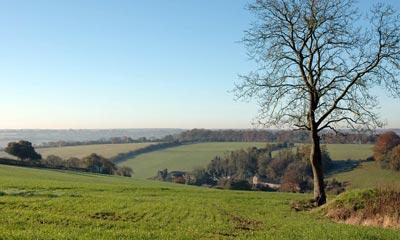Green belt disappears as Blair fails to honour countryside vow
Tony Blair came to power proclaiming his "love of the countryside". Figures released last week show, however, that he has allowed thousands of acres of Britain's most protected green belt land to disappear since 1997.
Mr Blair's Government has approved 162 different schemes for building in the green belt - land that is meant to be preserved to prevent urban sprawl - according to a parliamentary written answer.
The result is that housing estates, rubbish dumps and gypsy caravan sites occupy land previously covered with grass and trees.

Caroline Spelman, the shadow local government secretary, who obtained the figures, said that they demonstrated the Prime Minister's failure to protect the British landscape. "Before they were elected, Labour pledged to protect our green spaces. The truth is that they are stripping local communities of any say on planning and handing over tracts of land to developers," she said.
Green belts were introduced in England, Scotland and Northern Ireland in 1955 to limit the spread of built-up areas and to preserve the character of historic towns. Green belt land is protected under national planning policy and should not be developed unless there are exceptional circumstances.
Four months before Mr Blair took office, Labour pledged to be Britain's first truly "green" government. "Above all, we must not allow our countryside to become easy prey to developers and speculators," said one press statement.
Mr Blair had told Country Life magazine in 1996 that he supported curbing urban growth. "I love our countryside. I love the variety. For me, it is the open spaces, the closeness to nature," he said. "You really have to plan for your rural environment. Which is why some people in the country instinctively feel the Labour Party might take a more active view of that."
Of the 162 developments on green belt approved since 1997, 34 have been in the south-east of England, 30 in the east and 27 in the West Midlands. Forty-three developments involve housing; 23 approve or extend a gypsy or travellers' site; five involve waste management or landfill sites; and five are business parks.
One of the sites affected is a 1,200-acre stretch of green belt land in Newcastle Great Park, where 2,700 executive-style houses and a business centre are being built.
John Prescott, the Deputy Prime Minister, who is responsible for environmental policy, approved parts of the scheme in June 2000 without calling a public inquiry, despite protests from local communities.

header two
Nic Best, a regional policy officer for the Campaign to Protect Rural England, said that the landscape of north-eastern England was being seriously damaged by the loss of green belt.
"It is the quality of the landscape here that attracts people to the region. We are killing the goose that lays the golden egg by building over our best asset," he said.
Approval of gypsy sites has also infuriated many communities. In Higher Walton, near Warrington, Greater Manchester, a gypsy caravan site was approved on green belt land, despite protests.
A resident said: "It has been particularly upsetting because the green belt is there for a reason. Now the floodgates for applications from any Tom, Dick or Harriet have been opened."
Green belt land is also under threat near Stevenage, Hertfordshire, where a public inquiry is considering a proposal to build up to 5,000 houses west of the town.
As well as expressing concern about harm to the environment, local people claim that schools and health services will suffer because of the influx of residents.
James Clappison, the Conservative MP for Hertsmere, said: "The development will set a precedent for others who want to build on the green belt when we should be protecting the countryside."
About 12 per cent of land in England is classed as green belt. In Britain between 1998 and 2001, 11 per cent of land handed over to developers was from green belt, according to government figures.
Rural campaigners warn that this trend will continue and point to the conclusions of a government-sponsored review of housing, written by Kate Barker, which was published earlier this year.
The report called for a substantial extension of housing into green belt land. "Planning authorities should show greater flexibility in using their existing powers to change green belt designations where there are strong pressure points in a particular urban area," Prof Barker wrote.
The Government, however, continues to insist that it is committed to the green belt. Keith Hill, the housing minister, told Parliament last week that it would be protected. "Decent homes, sustainable communities, we are making it happen. Don't let the Tories wreck it again," he said.
The Telegraph, 09.05.2004
